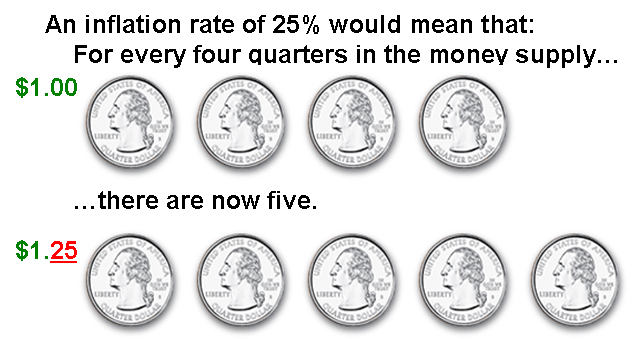Risk and Return Considerations
The higher the risk undertaken, the more ample the expected return – and conversely, the lower the risk, the more modest the expected return.
Learning Objectives
Evaluate a party’s risk aversion when proposing investment opportunities
Key Takeaways
Key Points
- The general progression in the risk – return spectrum is: short-term debt, long-term debt, property, high-yield debt, and equity.
- When a firm makes a capital budgeting decision, they will wish, as a bare minimum, to recover enough to pay the increased cost of goods due to inflation.
- Risk aversion is a concept based on the behavior of firms and investors while exposed to uncertainty to attempt to reduce that uncertainty.
- Beta is a measure firms can use in order to determine an investment ‘s return sensitivity in relation to overall market risk.
Key Terms
- systematic risk: The risk associated with an asset that is correlated with the risk of asset markets generally, often measured as its beta.
- inflation: An increase in the general level of prices or in the cost of living.
- political risk: the potential loss for a company due to non-market factors as macroeconomic and social policies.
Risk and Return Considerations
Risk refers to the variability of possible returns associated with a given investment. Risk, along with the return, is a major consideration in capital budgeting decisions. The firm must compare the expected return from a given investment with the risk associated with it. Higher levels of return are required to compensate for increased levels of risk. In other words, the higher the risk undertaken, the more ample the return – and conversely, the lower the risk, the more modest the return.
This risk and return tradeoff is also known as the risk-return spectrum. There are various classes of possible investments, each with their own positions on the overall risk-return spectrum. The general progression is: short-term debt, long-term debt, property, high-yield debt, and equity. The existence of risk causes the need to incur a number of expenses. For example, the more risky the investment the more time and effort is usually required to obtain information about it and monitor its progress. Moreover, the importance of a loss of X amount of value can be greater than the importance of a gain of X amount of value, so a riskier investment will attract a higher risk premium even if the forecast return is the same as upon a less risky investment. Risk is therefore something that must be compensated for, and the more risk the more compensation is required.
When a firm makes a capital budgeting decision, they will wish, as a bare minimum, to recover enough to pay the increased cost of investment due to inflation. Thus, inflation is a pivotal input in a firm’s cost of capital. However, since interest rates are set by the market, it happens frequently that they are insufficient to compensate for inflation.

Risk aversion also plays an important role in determining a firm’s required return on an investment. Risk aversion is a concept based on the behavior of firms and investors while exposed to uncertainty to attempt to reduce that uncertainty. Risk aversion is the reluctance to accept a bargain with an uncertain payoff rather than another bargain with a more certain, but possibly lower, expected payoff. For example, a risk-averse investor might choose to put his or her money into a bank account with a low but guaranteed interest rate, rather than into a stock that may have high expected returns, but also involves a chance of losing value. Risk aversion can be thought of as having three levels:
- Risk-averse or risk-avoiding
- Risk-neutral
- Risk-loving or risk-seeking
Beta is a measure firms can use in order to determine an investment’s return sensitivity in relation to overall market risk. Beta describes the correlated volatility of an asset in relation to the volatility of the benchmark that said asset is being compared to. This benchmark is generally the overall financial market and is often estimated via the use of representative indices, such as the S&P 500. Beta is also referred to as financial elasticity or correlated relative volatility, and can be referred to as a measure of the sensitivity of the asset’s returns to market returns, its non-diversifiable risk, its systematic risk, or market risk. Higher-beta investments tend to be more volatile and therefore riskier, but provide the potential for higher returns. Lower-beta investments pose less risk, but generally offer lower returns.
Licenses and Attributions
CC licensed content, Shared previously
- Curation and Revision. Provided by: Boundless.com. License: CC BY-SA: Attribution-ShareAlike
CC licensed content, Specific attribution
- systematic risk. Provided by: Wiktionary. License: CC BY-SA: Attribution-ShareAlike
- Real Estate Financing and Investing/Understanding Return and Risk. Provided by: Wikibooks. License: CC BY-SA: Attribution-ShareAlike
- Beta (finance). Provided by: Wikipedia. License: CC BY-SA: Attribution-ShareAlike
- Interest. Provided by: Wikipedia. License: CC BY-SA: Attribution-ShareAlike
- Risk-return spectrum. Provided by: Wikipedia. License: CC BY-SA: Attribution-ShareAlike
- Risk aversion. Provided by: Wikipedia. License: CC BY-SA: Attribution-ShareAlike
- inflation. Provided by: Wiktionary. License: CC BY-SA: Attribution-ShareAlike
- Political risk. Provided by: Wikipedia. License: CC BY-SA: Attribution-ShareAlike
- Inflation. Provided by: Wikimedia. License: Public Domain: No Known Copyright

